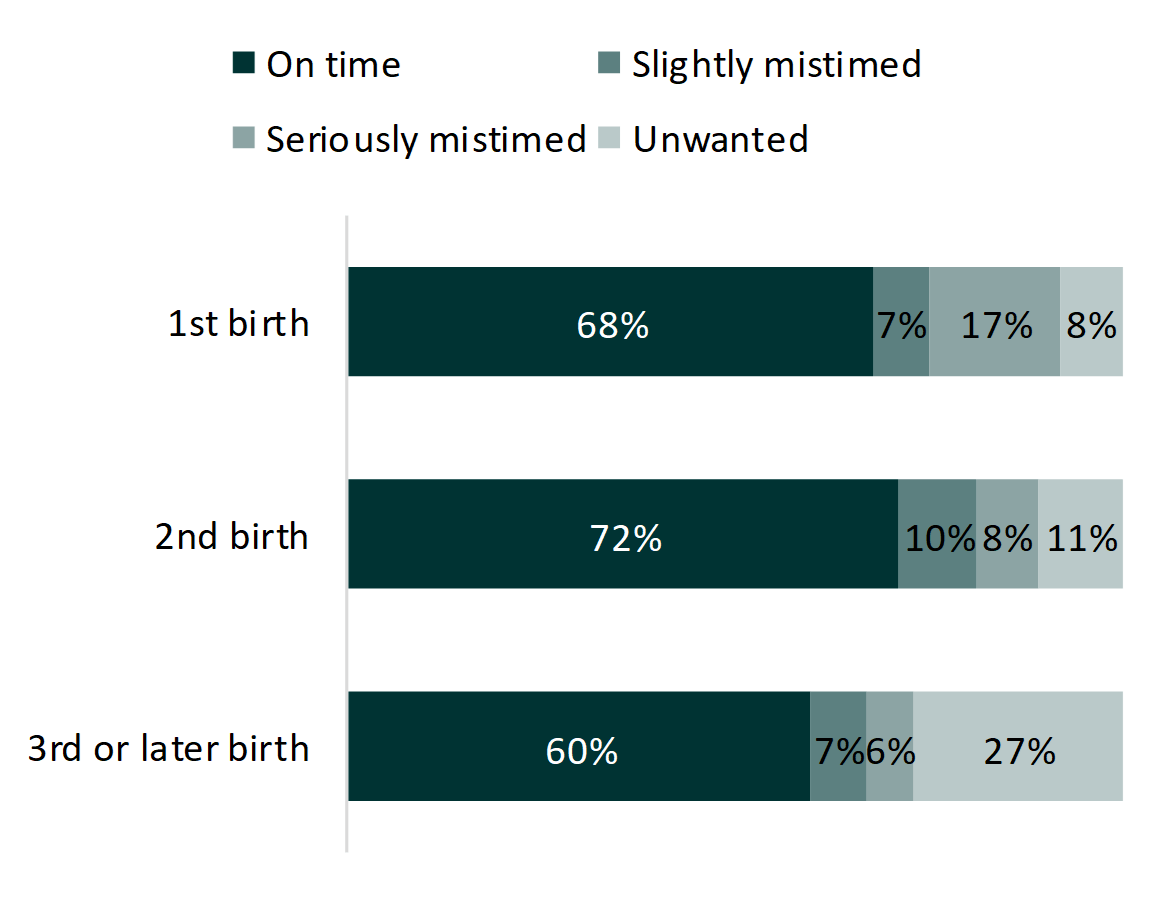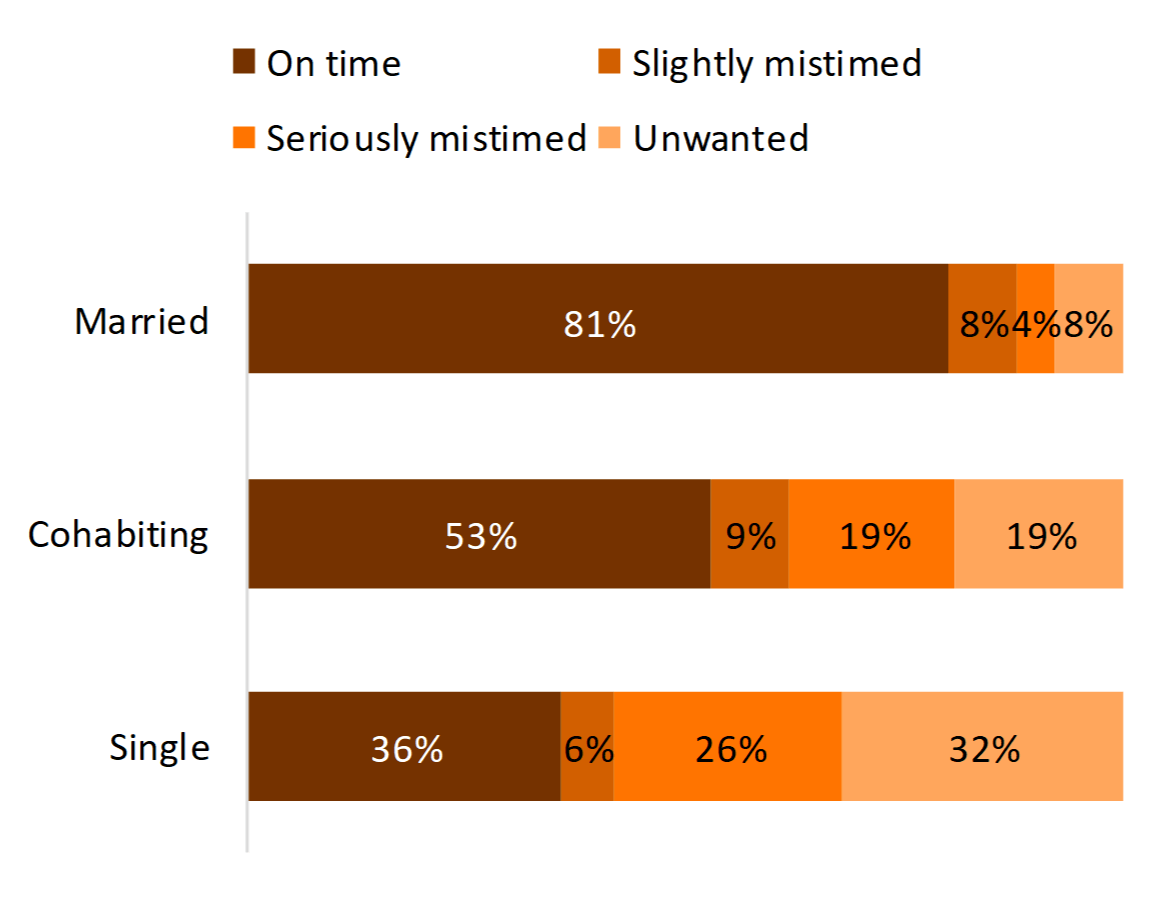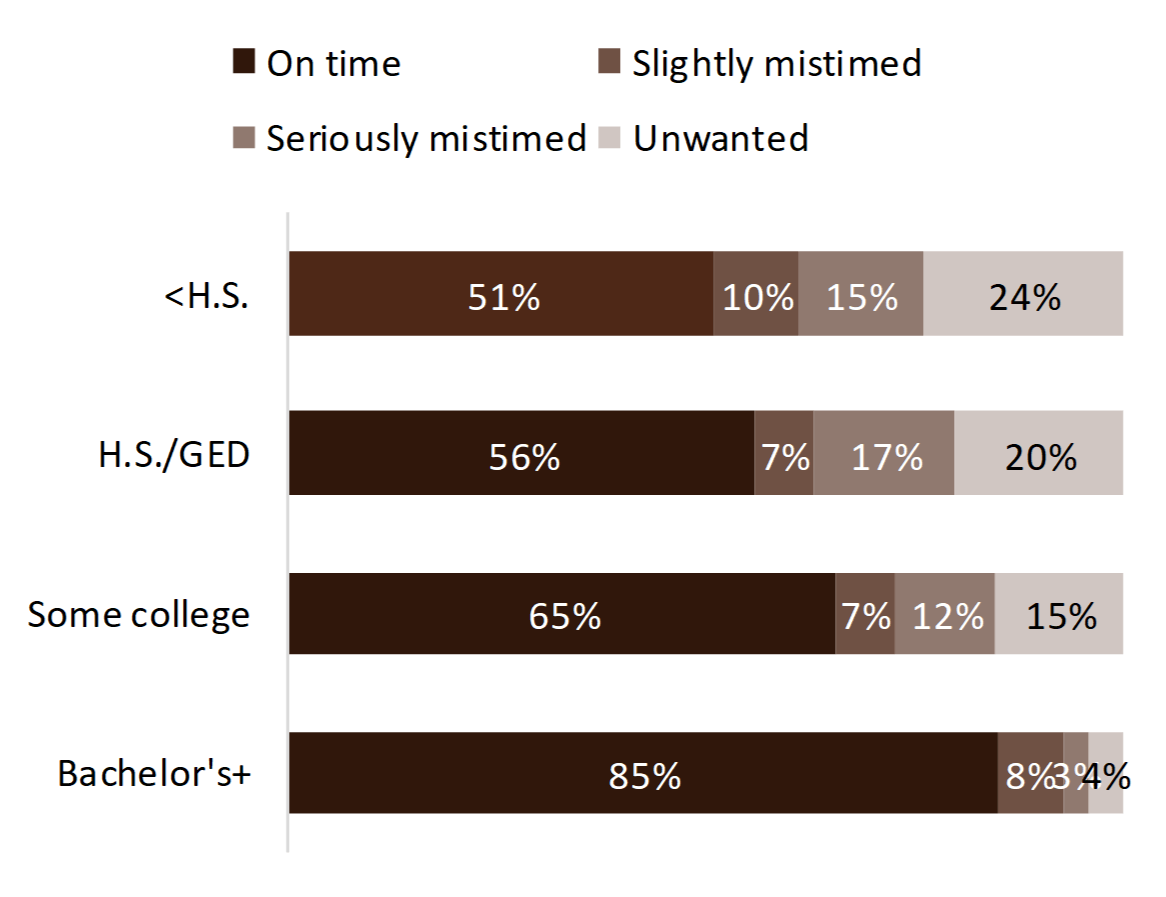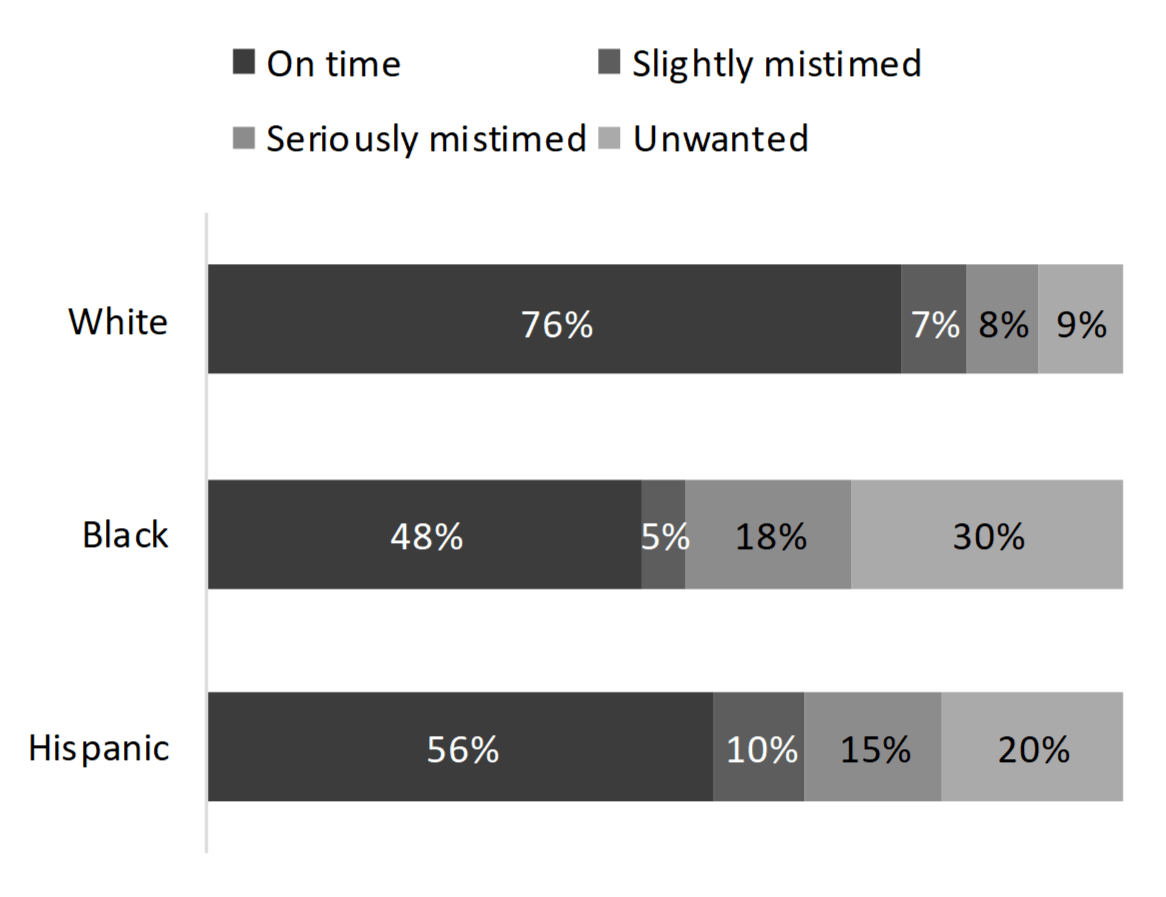Unintended Births: Variation Across Social and Demographic Characteristics
Family Profile No. 09, 2017
Author: Karen Benjamin Guzzo
One of the federal government's Healthy People 2020 initiatives is to reduce the proportion of births that are unintended. In this profile, we examine sociodemographic variation in birth intendedness using the 2011-15 cycle of the National Survey of Family Growth, looking at births occurring between 2010-2014. Birth intendedness is based on a series of questions in which women are asked to characterize each birth as on time, mistimed (wanted but occurring earlier than desired), or unwanted (the respondent did not want any births at all, or no additional births). When births are reported as too early, women were asked how much earlier than desired the birth occurred, and we categorize mistimed births into two groups: slightly mistimed (less than two years earlier than desired) or seriously mistimed (two or more years too early). Among births in 2010-2014, 67% are characterized as on time (FP-17-08). This profile is the second in a series of three examining the intendedness of births. Check out the other two profiles in the series:
- A Quarter Century of Change in Unintended Births (FP-17-08)
- Women's Experiences of Unintended Childbearing (FP-17-10)
Birth Order & Intendedness
- The majority of births across all birth orders are on time, with the highest proportion of on time births occurring among second births.
- Mistimed births (both slightly and seriously) are most common among first and second births, with slightly mistimed births more common among second births and seriously mistimed births more common among first births.
- Third births are more often unwanted (27%) than second (11 %) or first (8%) births.
Figure 1. Variation in Intendedness by Birth Order
Union Status & Intendedness
- A large majority (81 %) of marital births are on time, compared to just over half (53%) of cohabiting births and just over a third (36%) of single births.
- Mistimed births occur more often among single (32%) and cohabiting (28%) women than married women (12%).
- Variation by union status in mistiming is greatest for seriously mistimed births. Single women are six times more likely to have a seriously mistimed birth than married women.
- Unwanted births are four times as high among single women than married women.
- One-third of children born to single women are unwanted.
- One-third of children born to single women are unwanted.
Figure 2. Variation in Intendedness by Union Status
Education and Intendedness
There is a clear educational gradient to unintended fertility.
- Most births (85%) to women with a college degree are on time compared to half (51 %) of births to women without a high school degree.
- Just 3% of births to women with a college degree are seriously mistimed, with much higher percentages among women with less than a college degree (ranging from 12-17%).
- Only 4% of births to women with a college degree are unwanted, while a quarter (24%) of births to women without a high school degree are unwanted.
Figure 3. Variation in Intendedness by Education
Figure 4. Variation in Intendedness by Race-Ethnicity
Among births in 2010-2014, 67% are characterized as on time.
References
- Guzzo, K. B. (2017). A quarter century of change in unintended births. Family Profiles, FP-17-08. Bowling Green, OH: National Center for Family & Marriage Research. http://www.bgsu.edu/ncfmr/resources/data/family-profiles/guzzo-quarter-century-change-unintended-births-fp-17-08.html
- Guzzo, K. B. (2017). Women’s experiences of unintended childbearing. Family Profiles, FP-17-10. Bowling Green, OH: National Center for Family & Marriage Research. https://doi.org/10.25035/ncfmr/fp-17-10
- Healthy People 2020. Washington, DC: U.S. Department of Health and Human Services, Office of Disease Prevention and Health Promotion. https://www.healthypeople.gov/ Accessed 2/6/17.
Suggested Citation
Guzzo, K. B. (2017). Unintended births: Variation across social and demographic characteristics. Family Profiles, FP-17-09. Bowling Green, OH: National Center for Family & Marriage Research. https://doi.org/10.25035/ncfmr/fp-17-09
This project is supported with assistance from Bowling Green State University. From 2007 to 2013, support was also provided by the U.S. Department of Health and Human Services, Office of the Assistant Secretary for Planning and Evaluation. The opinions and conclusions expressed herein are solely those of the author(s) and should not be construed as representing the opinions or policy of any agency of the state or federal government.
Updated: 04/06/2021 01:32PM







